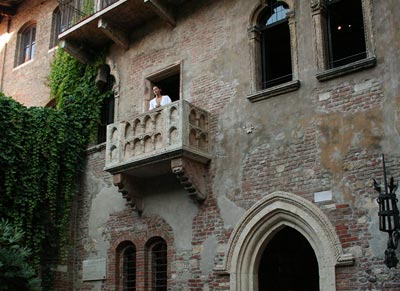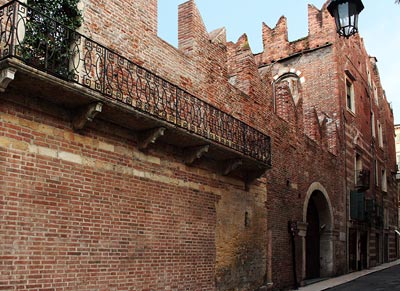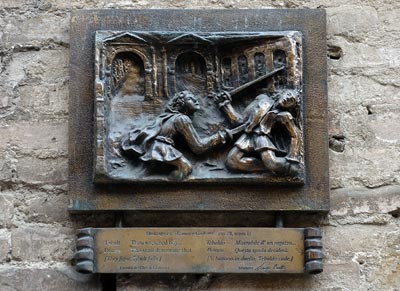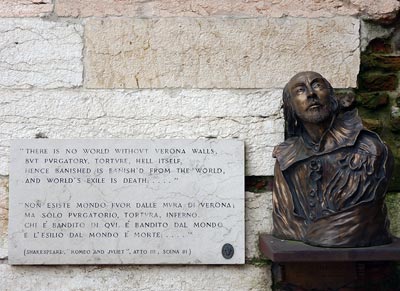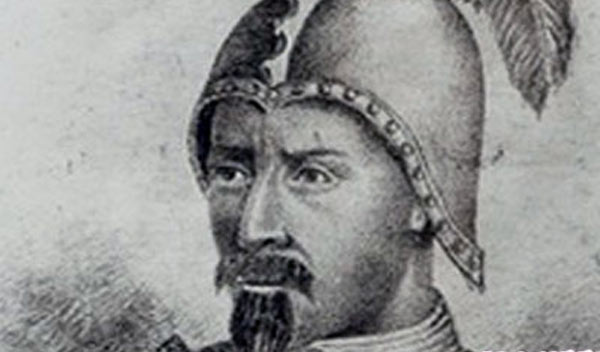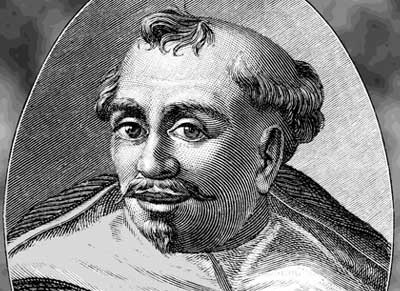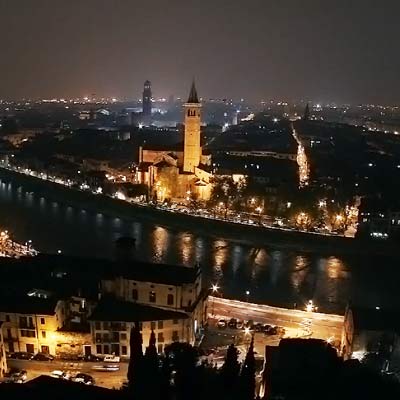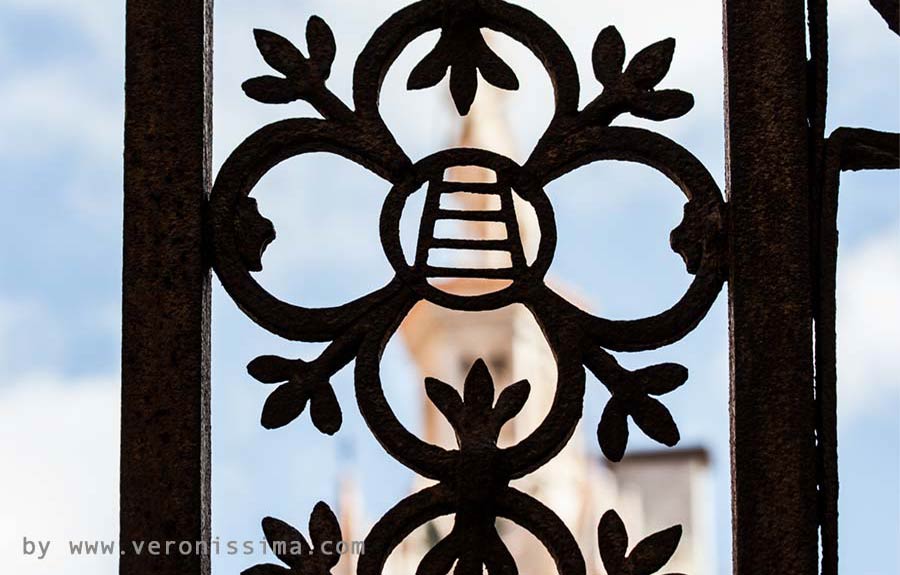The True Story of Romeo and Juliet

The first written version of Romeo and Juliet as we know it is the Historia novellamente ritrovata di due nobili amanti. Luigi da Porto, a writer from Vicenza, published it in 1530. It's almost 60 years before Romeo and Juliet by William Shakespeare, who certainly copied the plot.
Oncoming Tours
Info and Bookings:
+39 333 2199 645 info@veronissima.com P.I. 03616420232 C.F. CPPMHL74L13L781C
The work and life of Luigi da Porto are so intertwined with facts, historical events and poetry that the origin of Romeo and Juliet is a real mystery to investigate and discover. Below you'll find a few clues.
Historia novellamente ritrovata
Luigi da Porto was born in 1485 to one of the noblest families in Vicenza, then part of the Venetian Republic. He had the typical life of a Renaissance court man: adventurous, made up of duels, loves and literary idleness, marked by a tragic epilogue. He left us many rhymes, letters, novels. Of these, one in particular interests us:

Historia novellamente ritrovata di due nobili amanti
con la pietosa loro morte intervenuta già nella città di Verona nel tempo del signor Bartolomeo della Scala
The story is preceded by a dedication to the "beautiful and graceful Madonna Lucina Savorgnana". Let's keep in mind the beautiful Lucina, soon we will see who she was and why she is a key figure to decipher the rebus.
War
Da Porto continues his preface explaining how he actually heard the story on more than one occasion, and therefore had the desire to write it down.
He then tells how in his youth, he dedicated himself to the "profession of arms", and from time to time they sent him where it was needed.
It's the early 1500s. For over a century Vicenza, Verona and the entire north-east of Italy were part of the Venetian Republic. The expansion of the powerful state of Venice seemed to have no end. Many began to worry about their possessions. Among them Pope Julius II, who allied with France, Spain, the Holy Roman Empire, and moved war against Venice.
Luigi da Porto joined the Venetian army as a knight, stationed in Friuli, from where the troops of the enemy could cross the border.
Peregrino the Archer
At his side is an archer named Peregrino. He's in his 50s, from Verona. Luigi da Porto has him always at his side in the long and boring marches because, like all those from Verona, Peregrino loves to talk a lot and is of great entertainment. Despite his age, he is always in love with someone, and has funny stories of gallant adventures to tell.
As they march through the countryside devastated by war, Peregrino sees the sadness on his lord's face. He is a man of experience and immediately understands the reason of that feeling. He turns to da Porto and asks him:
"Do you always want to live a sad life because a cruel one doesn't love you?"
He goes on saying that even though he knows that it is easier to give advice than to follow it, his Lord should not torment himself too long, for it is dangerous to follow Love, and almost always leads to a sad end. And to prove what he says he tells him a story that happened in his hometown Verona. It's the story of two noble lovers who, following their passion, died miserably.
The story is obviously that of Romeo and Juliet. And soon we'll see how similar it is to Shakespeare's one and perhaps even more dramatic.
Peregrino says that the story takes place at the time when Verona was ruled by Bartolomeo della Scala. The time span is narrow and precise since Bartolomeo was in power between 1301 and 1304. In the same period Dante was condemned to death in Florence and seeked refuge in Verona. In the VI chapter of the Purgatory Dante mentions Montecchi and Cappelletti among the families who fought in the clashes between Guelphs and Ghibellines parties.
Battle and Wounding
On June 20th 1511, by the Natisone river, near Manzano, the Venetian army clashes with the imperial one. The battle is violent, Luigi da Porto is wounded in the neck and remains paralyzed. We don't know what happens to Peregrino.

Da Porto was transferred to Venice and then to Montorso Vicentino, in the family estate. Here he spent the rest of his life, studying and writing.
There you can still admire villa Barbaran-da Porto, magnificent example of venetian style villa.
Romeo and Juliet's Castles

From there you can clearly see the two Scala family fortresses of Montecchio Maggiore. Tradition has it that Luigi da Porto found inspiration to write his story by looking at the two towers. They are facing each other as if they were of rival families. They were then renamed the castles of Romeo and Juliet.
Lucina Savorgnan
Let's go back now to the mysterious lady of the opening dedication. Who is Lucina Savorgnan?

The Savorgnan were a noble family from Friuli, related to Luigi da Porto on the mother's side. Artists and humanists of the time frequented the Savorgnan manor. Among them Pietro Bembo, who loved her mother Maria. The writer Gregorio Amaseo gives a brief but significant description of the girl during a party held at the Savorgnan house on February 27, 1511. It's carnival. The beautiful and elegant Lucina does not go unnoticed:
"...the same evening, we walked back to the house of lady Maria Savorgnan, where they danced at the sound of a harpsichord, and in consonance to the music, her daughter lady Lucina, a fair maiden, was singing beautifully, and we danced until late..."
Apparently Luigi da Porto, who was in Friuli at the time, also participated the same party. The young knight fell madly in love with the beautiful Lucina, probably reciprocated.
From the introduction to the Historia novellamente ritrovata he says that, together with Peregrino, he was advancing towards Udine where the girl resides, "perhaps urged by Love".
Luigi da Porto asks her father permission to marry her. But there are conflicts between the two branches of the family and the uncle refuses.
Four months later Luigi da Porto is wounded by the Natisone river. Lucina marries Francesco del Torre.
All the pieces of the story seem to go in their place.
The Rant
The ending, in particular, has a bitter and revealing taste. Archer Peregrino concludes the story by complaining about the women of his time (1500s!!) compared to those of the Middle Ages. He wonders how many girls today, like Juliet, would be so faithful to their lover as to follow him in death. According to him, very few. He concludes that today probably, even before he has exhaled his last breath, they would already be thinking of finding another man.
"O faithful love, that formerly reignedst in the hearts of women, where art thou fled? In what bosom dost thou dwell? Where is the woman that at present would act as the faithful Juliet did towards her dead lover? When will her fair name be celebrated by the most eloquent tongue? How many women art there now, who on seeing their lovers dead, would hasten to find out other much sooner than die by their sides?"
Worse, women today don't even need their lovers to die. It's enough that they are struck down by misfortune for their ladies to quickly leave and forget.
Poor men of this age, who cannot hope for the long loyalty of their women.
"...some women, even contrary to their duty, reason, fidelity, and attachment, forget and abandon those lovers who once very dear to them, not because they are dead, but only on account of their being a little persecuted by fortune, what can we imagine they would do after their death? Miserable are the lovers of our age, who, neither by long and faithful services, nor by dying for their mistresses, can ever hope that they will die for them..."
In the light of the lives of Luigi da Porto and Lucina Savorgnan, the words spoken by Peregrino sound like a real disconsolate rant. If the figure of Peregrino is only a literary invention and is Luigi da Porto speaking, the dedication to Lucina Savorgnan and the conclusion appear as resentful regret for what their love story might have been.
Between reality, fantasy, literature
Luigi da Porto was cultured, had studied Dante, knew the history of the cities of Veneto. His Historia novellamente ritrovata could therefore be a way to hide inside a novel his personal misfortunes and the regret towards Lucina Savorgnan. She had not been faithful to him against the opposition of her family and the events that made him invalid.
The writer places the setting in a historical context that makes it plausible, and with an idealized ending. But the party where the two protagonists meet and fall in love, the family that opposes marriage, the unfortunate events that cause the death of the young man are all real.
Luigi da Porto chose a medieval setting. At that time there were harsh feuds between Guelphs and Ghibellines parties. Montecchi (Montagues) and Cappelletti (Capulets) were among them. Dante talks about them in the VI chapter of the Divine Comedy. The setting of the novel is Verona where the two families lived, at the time of the lordship of Bartolomeo della Scala who first gave hospitality to Dante.
Want to know more?
Is the story of Romeo and Juliet just the result of Luigi da Porto's ability to mix historical facts with his sad personal events?
Maybe not.
Masuccio Salernitano
The plot we all know is in fact even older. It appears for the first time in Novellino, a collection of short stories written by Tommaso Guardati known as Masuccio Salernitano, published in 1476. Almost sixty years before Luigi da Porto's version.
The story is set in Siena. The two protagonists are Mariotto and Ganozza. The mood is definitely less romantic and more mouthy. The two are clandestine lovers, but Mariotto has to escape from Siena because he kills a man in a street brawl. Ganozza drinks the potion so she can leave the city undisturbed and meet her lover. But Mariotto in the meantime returns to Siena in secret to meet her. Guards discover him and the authorities sentence him to death for the murder he committed. When Ganozza learns that Mariotto is dead, she locks herself in a convent and dies of heartbreak.
In the preface of the Historia novellamente ritrovata, Luigi da Porto states that he heard the story of Romeo and Juliet several times. It is plausible that in reality the plot had been circulating, in oral form and in many variations, for some time. Maybe at its origin there were facts that really happened and then were fictionalized. On the other hand, we are at a time when, especially in noble families, marriages were arranged by parents, often against the will of those directly involved, at a young age, when one tend to make extreme acts.
The doubt therefore remains. How much in the story of Romeo and Juliet is the result of fantasy and how much is true? We will never know. It is a mystery that nothing takes away, but rather adds charm to a moving and beautiful story. Not surprisingly it has enchanted so many artists.
From Italy to England
Twenty years later the writer Matteo Bandello published his own version of the novel by da Porto. It was then translated into French and English, in the form of a poem, by Arthur Brooke: The Tragicall Historye of Romeus and Juliet (1562).
William Shakespeare, in fact, merely adapted it for the theatre.
Want to know more?
Further Information:
+39 333 2199 645 info@veronissima.com P.I. 03616420232 C.F. CPPMHL74L13L781C
+39 333 2199 645
info@veronissima.com

 IT
IT 日本
日本 DE
DE FR
FR 中文
中文 ES
ES
